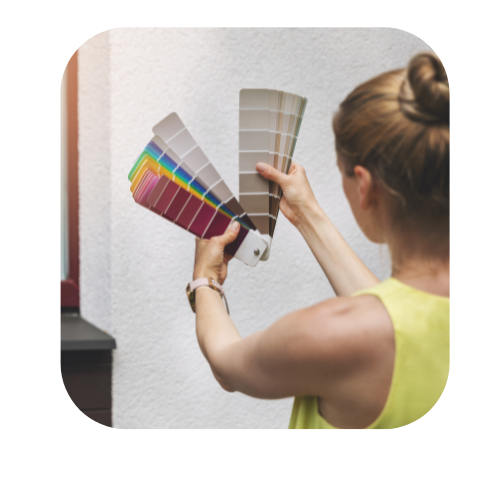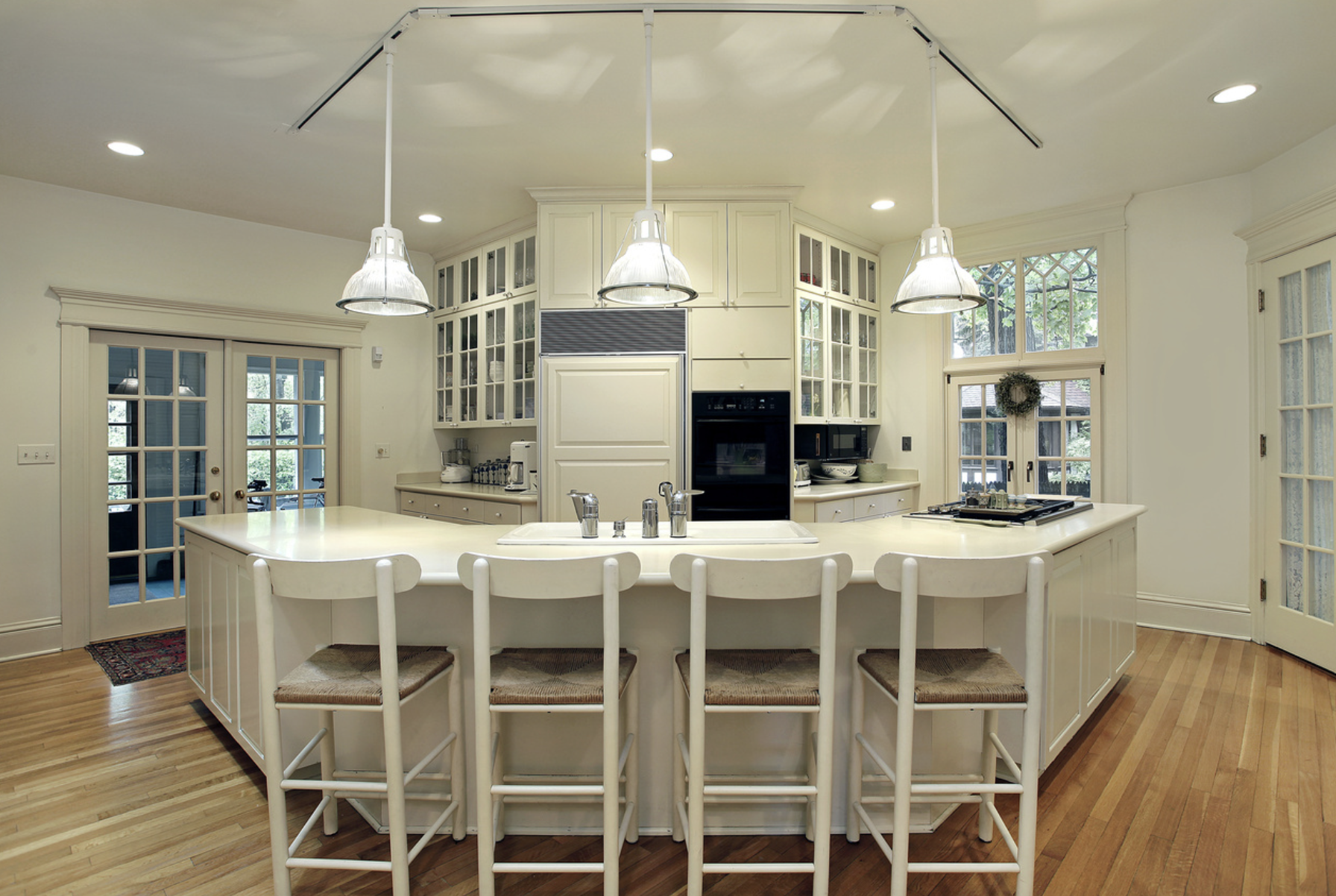Which interior paint is right for my project?
Chapter 2
What kind of interior paint should I use?
It’s not easy to determine what paint type and brand to use. Lots of publications print “best of” lists (like Consumer Reports, Wirecutter etc.), and usually there is no one consensus.
Latex paint:
This is likely going to be the formula you choose for most interior walls and trim products. Here are some of the properties of latex paint:
- Long-term flexibility (resistance to cracking when your home “shifts”).
- Resistance to yellowing in areas protected from the sunlight
- Fewer odors
- Non-flammable
- Clean up with water
- Less durable than oil paint
- Likely to fade faster than oil paint
- Less “hiding power” for wood knots and stains you’re trying to cover up
- Imperfections and brush strokes are easily seen
- Easy to apply and, therefore easy to touch up
- Faster drying time than oil paint.
- Can be painted over a surface previously painted with oil paint.
- More environmentally friendly than oil paint.
Oil paint uses on interior painting projects:
- It cannot be painted over latex – if your existing walls are oil-based, you need to continue to use oil paint on them.
- Contain natural oils in a solvent thinner – when the thinner evaporates, a resin forms a hard coating.
- Durable – used for interior spots that need extra durability (think baseboards, cabinets, doors).
- Resists staining and rusting over time
- Strong odor
- Difficult to wipe clean vs. latex.
- It’s more difficult to clean up than latex paint.
Choosing a brand of paint
Like car brands, there are both “budget” and “luxury” paint formulas within a brand.
For example, Benjamin Moore sells both a cheap, contractor interior paint that does the job, and the more luxurious Aura formula which has deeper pigments.
Often one coat of the “luxury” formula (which is generally the more expensive option) covers the walls, while the budget option takes two coats. In this way, it’s possible to save both time and money using the more expensive brand.
Interior paint brands we recommend:
We like both Sherwin Williams and Benjamin Moore paints. If you like a color from another brand, you can have it matched with a Sherwin-Williams or Ben Moore formula at the paint store.
What about Farrow and Ball? Yes, we know you love the colors. In fact, Farrow and Ball was smart enough only to sell about 150 “great” colors to help folks narrow down their choices. Take a look at their website, order a fan deck and use their colors to get close to what you’d like.
While we are 100% able to paint Farrow and Ball paint, the formula is hard to work with. We’d much rather match a F&B color to Sherwin Williams’ Cashmere or Emerald formulas to make the colors easier to apply.
Plus, Farrow & Ball are “luxury” paints – which means they are about 50% more expensive than premium paints.
Which paint sheens work best on interiors?
The sheen is the amount of shine you’ll see once the paint is dry.
In the past, sheen was highly correlated to washability (also called “scrutability”) – that is shinier walls were easier to wash clean than less shiny ones. Today, paint manufacturers have done a nice job ensuring flat and matte paints are as washable as their shinier counterparts. Look for the words “washable” or “scrubable” on the paint can or on the manufacturer’s website.
As more sunlight streams into a room, the amount of shine you’ll need in the paint should decrease. Sunlight will naturally make your walls look shinier (which highlights imperfections)
Review of different paint sheens:
Flat (also called matte):
- This paint will dry with almost no shine.
- Best at hiding wall imperfections
- Has a classic look – great for older homes or newer homes built to look older.
- Almost always used on ceilings
- Not as washable as shinier sheens, but today’s formulas are much more washable than flat paints of the past.
Eggshell:
- Will dry with a touch of shine – it looks like the amount of shine on an eggshell.
- Hides wall imperfections, but not as well as flat paint does.
- Most common sheen for walls.
Satin:
- Shinier than eggshell and not as shiny as semi-gloss, Satin paints are used in areas where some shine is needed (front door, trim).
- Most common sheen for exterior trim
- Durable
Semi-Gloss:
- Fairly shiny paint used for areas where you want durability (baseboards, doors, trim)
- Semi-gloss paint almost provides a “pop” to the color, allowing it to stand out a bit more. Blacks seem blacker and whites seem whiter.
- Will show imperfections!
Gloss:
- Used mostly for cabinetry and areas where durability and washability is most important.
- Color seems richer and deeper in gloss sheens.
- Great for high-touch areas like banisters.
- Will show imperfections!
In general, here are our sheen recommendations:
- Walls: Flat (also called matte) and eggshell.
- Ceilings: Flat
- Trim: Satin, Semi-Gloss
- Cabinetry: Semi-Gloss, Gloss
- Banisters: Gloss
Questions to ask an interior painter about your South Shore home:
Make sure the answers to these questions are in writing on your interior quote even if the painter tells you you can trust them.
What kind of paint do you recommend for my rooms? The brand and grade of paint should be spelled out in writing.
If a contractor only writes “Benjamin Moore” paint, you don’t know which grade of Benjamin Moore Paint they plan on using. Like car companies that have different levels of luxury cars, because Benjamin Moore has a range of paints from very cheap to very expensive, you want the grade of paint specified in writing along with the brand name (for example, “Benjamin Moore Aura Paint.”)
What work is included in the quote? (Written out on your quote, so there are no questions.)
What work is excluded from the quote? (i.e., “trim in baby’s room will not be painted”)
Is there a written warranty? Get a copy of the written warranty.
Is in-home color consultation included in the price of the interior painting quote?

Is the painting contractor licensed and insured? If a contractor works on your home and is not insured, you, the homeowner, are liable if someone gets hurt on the job.
Hint: A way to ensure you are working with an insured contractor is to have them add you to their insurance policy as “additional insured” – this ensures that their insurance policy is in full force and paid up.
When can this interior painter start, and how long will it take to finish? Remember, if there is a little bit of a wait for the painter, this is a good sign that they are in demand.
Can you meet my deadline? If you’re having a wedding at your home, you may need to have the painting done by a specific date. Most of the time, deadlines can be met if you let the painting company know and give them about a month’s notice.
Other considerations about the interior estimating process:
Did the estimator pressure you to buy? Since you are just in the quoting phase, you should look to be educated at this point, not pressured into signing a contract. Take your time deciding and ensuring you have enough information from each contractor to compare quotes.
Some people want to hire a local painter so jobs stay in their community. Ensure you understand what the painting company does to give back to the Boston area and the South Shore towns where they work.
Can the painting company quote your interior project using photos or video if you can’t be home for a quote? While it’s always better to meet for a quote in person, a good estimator can talk to you over the phone to get the scope of the work you’d like done and email you a quote.

Does the South Shore interior painting company offer all the services you need?
Some painting contractors only paint. Other South Shore painters offer one-stop shopping for carpentry, rotted wood replacement, and interior color consultation. Ensure you’re getting bids from South Shore painting companies that will provide the breadth of services required for your interior painting project, so you don’t need to hire multiple contractors.
Color help:

If you are thinking of changing your exterior color, look for a company with a complimentary in-home designer who can work with you inside your home to get your interior color palette just right. The hour or two you take with a designer upfront will pay dividends for years.
Ask if the painting contractor offers free computer renderings of your rooms in different paint colors so you can see what your space will look like before the painters even pick up a brush.
Go to Chapter 3 – Services offered by interior painting companies


 The Ultimate Guide to Hiring a South Shore and Boston Interior House Painter
The Ultimate Guide to Hiring a South Shore and Boston Interior House Painter